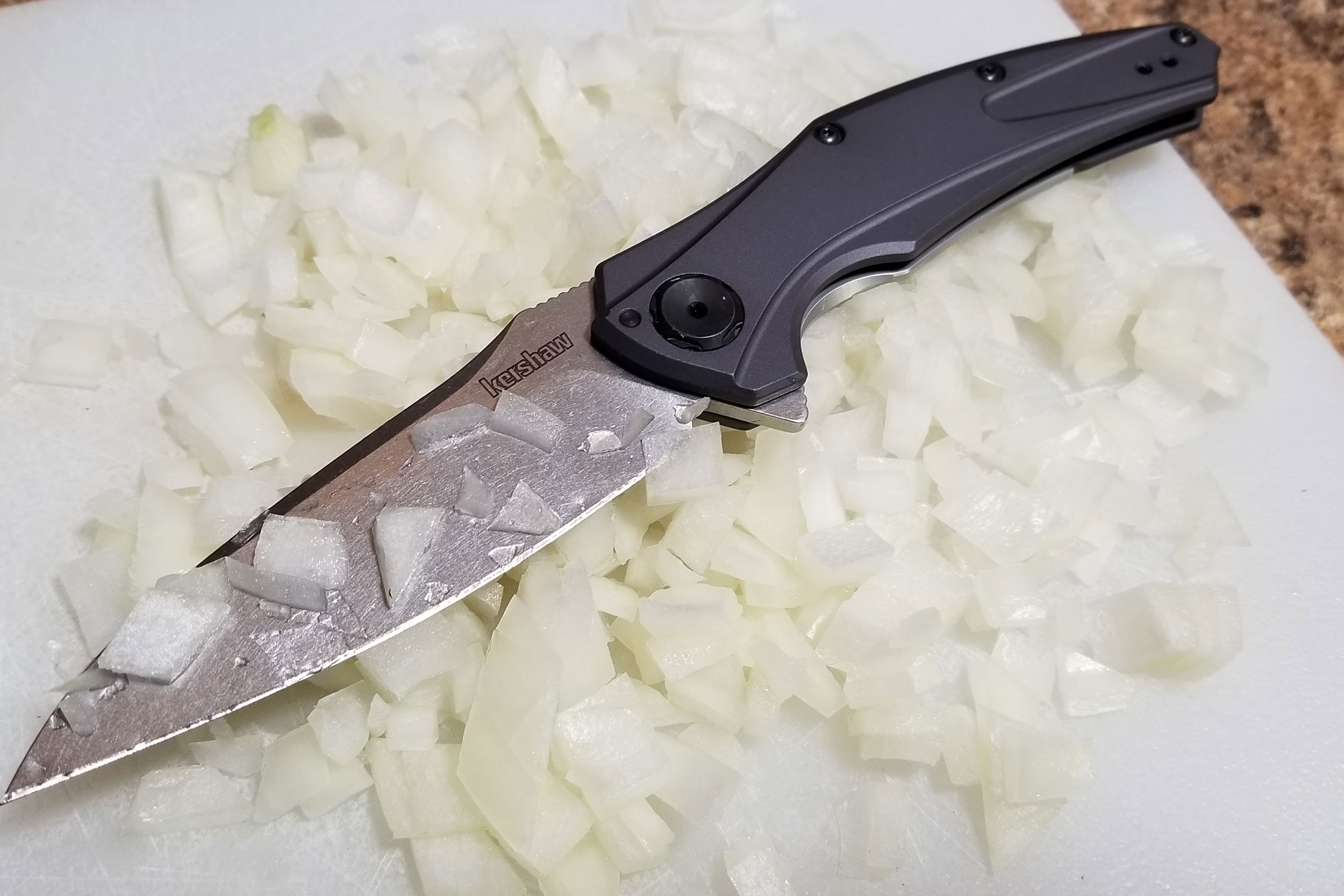Little strokes of genius abound in this lightweight but stout pocket folder, the Kershaw Bareknuckle.
Someone at Kershaw thinks they’re clever. Take the Bareknuckle 7777, for instance. Based on the design of the Zero Tolerance 0777, this new knife honors the classic while offering “a slimmed-down profile and upgraded materials.”
And guess how much it retails for? That’s right, approximately $73. But is there more to this blade than its cutting wit? Let’s take off the kid gloves and find out!
Kershaw Bareknuckle Review
We’ll start with an overview of the Bareknuckle’s new, svelte dimensions. The blade is composed of 3.5 inches of 14C28N steel, with an intriguing drop-point design. The thickness is a sensible 0.12 inches, tapering past its stonewashed edges to a flat grind. The aluminum handle measures 4.7 inches, bringing the overall length to 8.2 inches.
As a complete package, the Bareknuckle is eminently carryable. Its 3.4 ounces are spread through a handle that’s just under half an inch thick, with a deep-carry clip that cants nicely toward the back of the pocket.
Kershaw: American Origins
I received this blade as a review sample from Kershaw’s factory in Tualatin, Ore. Like the Dividend and Link, this represents part of the company’s growing lineup of American-made knives. And, also like its cousins, the Bareknuckle represents a solid execution of an interesting design.















